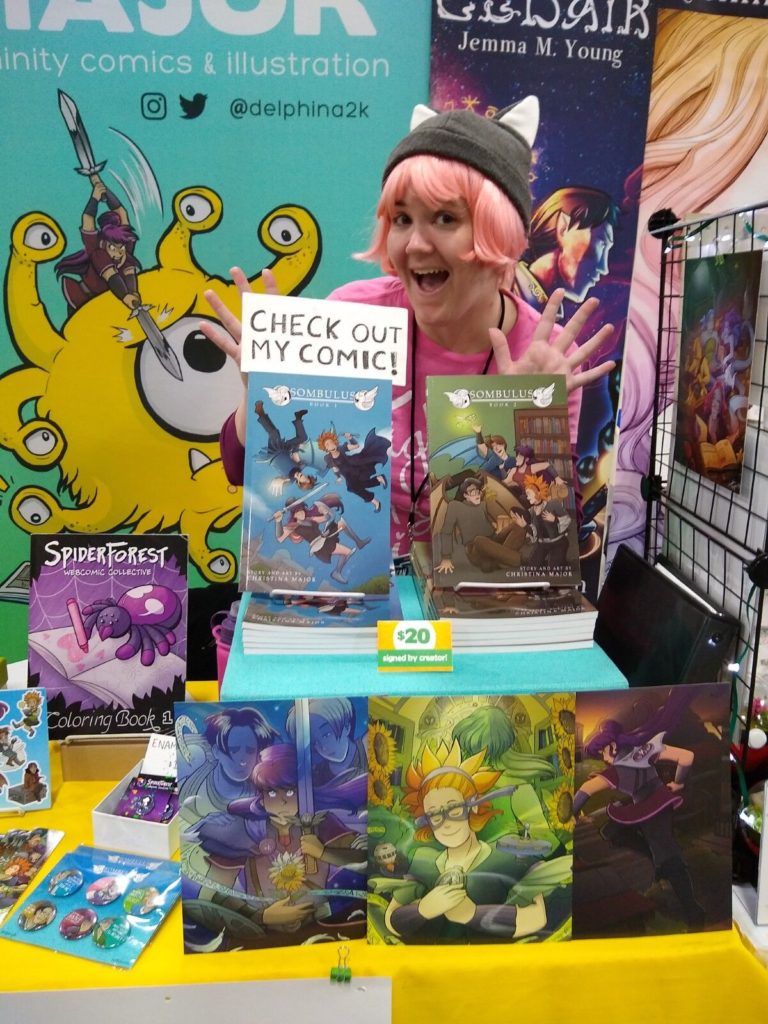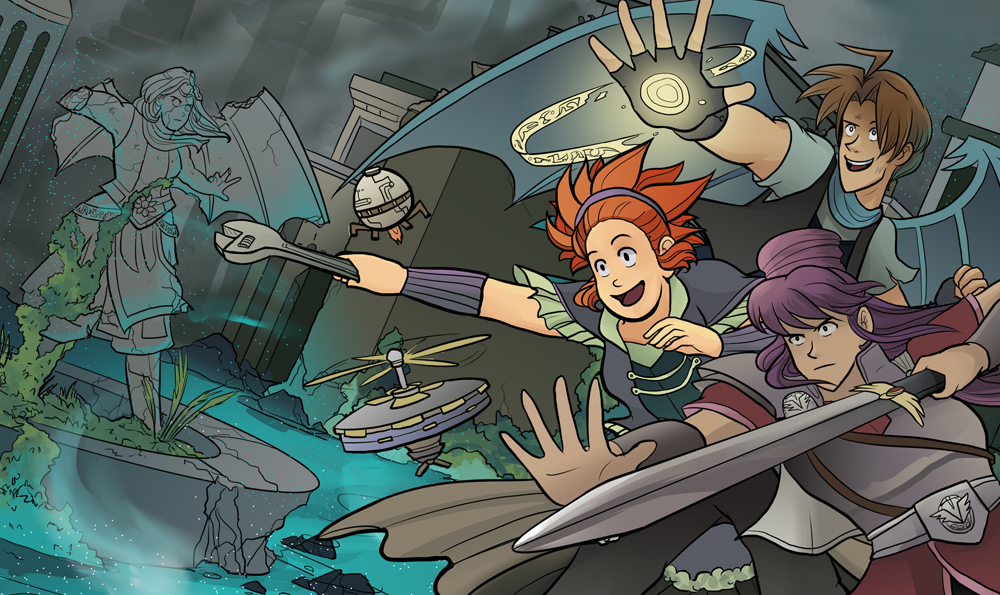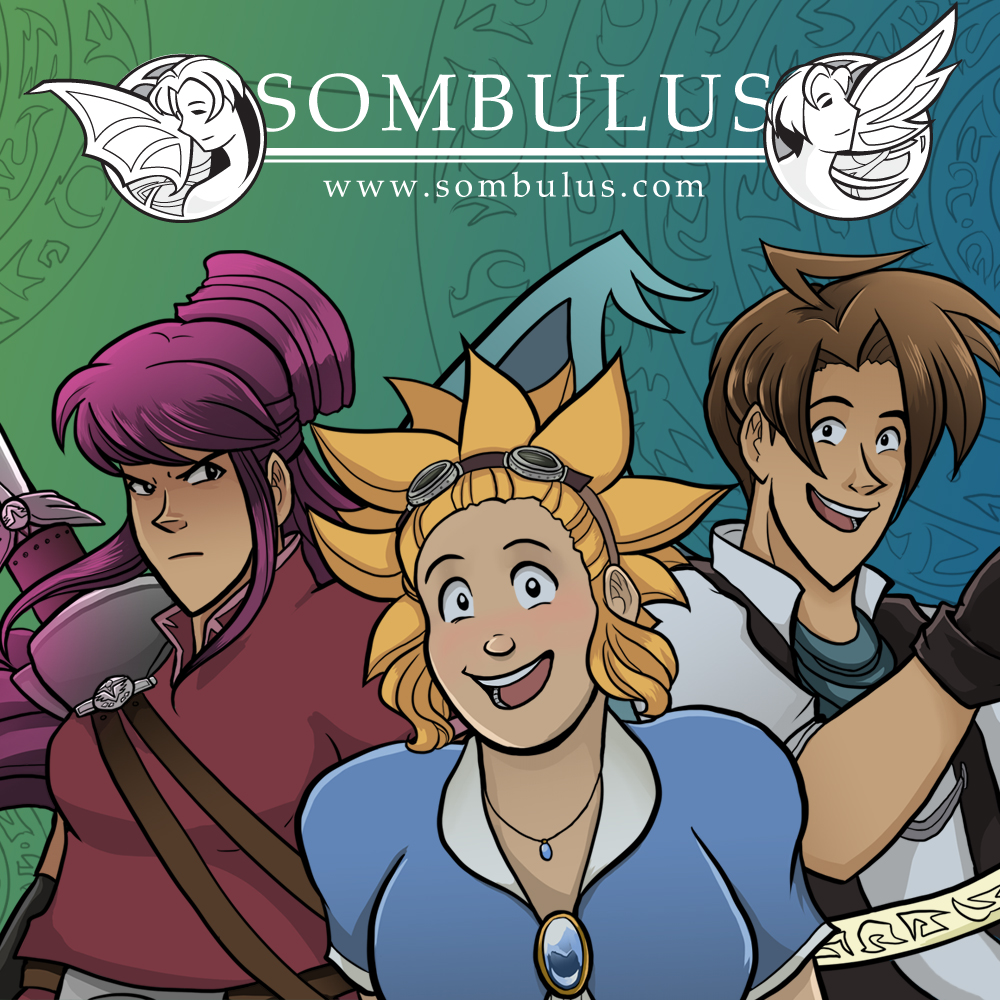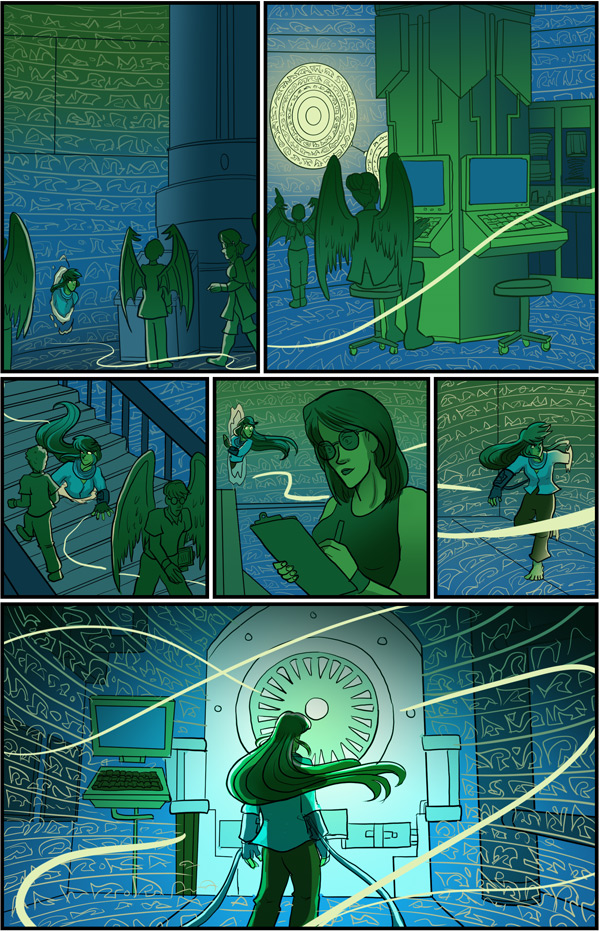CHRISTINA’S WORK

Tell us about your project, Christina.
Sombulus, is my ongoing fantasy adventure webcomic. Crafting together my longtime love for comedic-action manga like Ranma 1/2 and the parody of Terry Pratchett novels, Sombulus follows a girl who talks to machines, a zealous paladin out to stop the forces of evil, and a magic scavenger who gets distracted by shiny objects. As they adventure through worlds of flying toasters and alternate-reality Starbucks, they meet new friends, challenge old beliefs, and learn to trust each other through the many strange problems they encounter… and the ones they create. It’s all free to read on my website at www.sombulus.com, and my readers helped me Kickstart the first two books which you can buy online at www.sombulus.com/store!
(You can also follow Christina on Twitter, Instagram, and Tumblr!)

How long have you been creating?
I’ve been making Sombulus since 2010, and publishing two pages a week on my website at sombulus.com. I’m hoping to bring the main story arc to a conclusion online (and bring the rest of the story to print) within the next five years.
THE NEED FOR A SOLUTION
What challenges led you to look for help?
Starting a webcomic is always extremely exciting. You’ve got fun new characters, fresh worlds and intrigue to stir up, questions to make your readers stew over. But when the middle of my story crept up and one of my biggest plot points was behind me, my path wasn’t as clear as it used to be. I needed to answer some of those questions and start resolving things in a satisfying way. But the rough ideas and outlines I had years ago? Didn’t hold up the way I thought they would!
How could I reprocess, rescript, or reoutline a story I was already in the middle of? How could I approach my future chapters in a way that built on the work I had already published? Were any of my early plans still viable at this stage in my story? There’s lots of writing advice out there for starting your story, but middles and endings are just not talked about in writing circles, and I was feeling a little lost.

What did you try to fix the problems you were running into?
Prior to contacting Robin, I had lots of printouts and notes on my existing pages. I am not an organized person, and really felt overwhelmed analyzing what I had done and figuring out next steps. I knew I needed an outside perspective, and I had a longtime beta reader/idea bouncer. But articulating my plans for my future chapters to my beta reader was impossible, and they ultimately did not have the experience or knowledge to help me with my specific problems.
My existing writing process, while fine at the beginning of my story, was building into growing dread and confusion that I couldn’t finish what I started, and fear that any plan I came up with was going to be lackluster at best and hated by my readers at worst.
DECISION PROCESS
What was important to you when deciding to reach out?
In finding a developmental editor, someone with the ability to look at my big body of work from an outside perspective was important, but I wanted more than another beta reader. Experienced perspective was key. I wanted someone who had faced what I was facing and could make recommendations while still in the development/scripting phase, not just someone who could look at my pages after they were all done and give them a thumbs-up or a thumbs-down.
Why did you decide to contact Robin specifically?
Robin had been one of my co-hosts at Webcomic Alliance and I had been a big fan of LeyLines. The complex storylines and large cast felt similar to my own, and how Robin cleanly balanced character arcs and integrated strong themes always impressed me. From watching the care and consistency they put into comic projects like LeyLines and Wavemen, I knew Robin had the organization and analytical skills to really get down to the heart of what my comic was about, and help me make strong decisions about how to move forward.

IMPLEMENTATION
What was the process of working together like?
I approached Robin via email and we arranged a text chat one afternoon to discuss my needs. I followed up with an email posing a few specific questions I had, then delivered PDF compilations of each of my chapters so far for review. Two weeks later, I received a 12 page Word document report dissecting different themes and directions.
I was blown away by the quality of work Robin delivered. Themes and angles I’d never even considered were brought out, and it was really clear that Robin wanted to understand my goals and make my story stronger.
Is there a particular aspect of the service you liked most?
Coming to an editor, I was feeling a lot of skepticism. I’d never worked with an editor before! What if they looked at everything I’d done and said it was garbage and I had to start over? What if I had written myself into a corner and things were too complicated? I really appreciated how affirming Robin was about my directions so far and my skill as a storyteller, and it reminded me that a good editor has the experience to critique and comment without leaving you feeling like you’ve done everything wrong or just telling you “how to fix it” and pressuring you to follow their idea of how your story should be. Robin also had experience with webcomics, and understood what was and wasn’t possible with the webcomic model of release, and that was a big boon in my situation.

RESULTS
How has the consultation helped you achieve your goals?
Robin’s consultation made sense of my beginning pages and helped me see what I had already done and where I could go from there. I now have a solid outline for the remainder of the story and the confidence that I can finish.
What made the service stand out?
Robin’s recommendations were practical, professional, well-founded and numerous. While there were some that didn’t match what I wanted, there were so many ideas and lots of reasoning behind them, so much so that even the directions I didn’t want to follow gave me inspiration. It was clear that Robin really spent the time to understand the work and had the creativity and lateral thinking to bring out what I wanted the story to be, instead of railroading it into “the one correct direction”.